Why Steel
Sound Isolation and Noise Control
No one likes a noisy building. Your team should start thinking about noise intrusion and other acoustic objectives early in the design process--particularly as acoustic requirements become more stringent and "green" design emphasizes the effects of noise pollution.
Acoustic performance comes down to the selection and assembly of building elements, not the material types and framing systems. A good design will create the desired sound characteristics using any material and any frame system.
AISC's Design Guide 30: Sound Isolation and Noise Control in Steel Buildings outlines a logical approach to achieve the desired acoustic environment. Please refer to the Design Guide for further information.
To begin, one must determine a reasonable sound level for a given space. For example, how quiet does an office need to be? What about a large conference room? The building finishes you choose will have an impact on the noise level. The table below outlines the sound absorption coefficients of common building finishes.
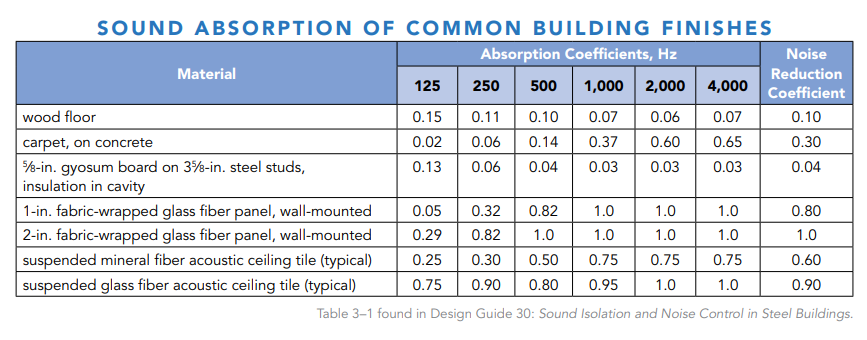
Finishes are only one part of the equation. How many people will be in the space? For example, an office may have very different requirements than a recording studio or performance space. The following table is a good reference for the background noise criteria (NC) ratings of various settings.
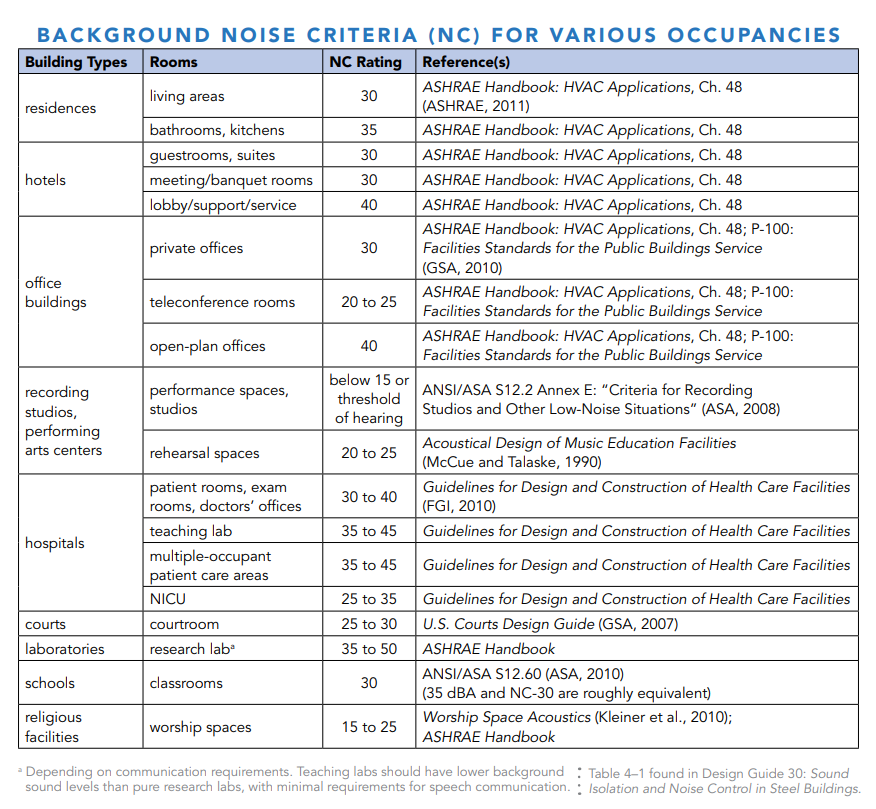
Next, consider what other elements might add additional noise. Where are loud conversations or amplified presentations likely? Where do you anticipate a lot of foot traffic? What mechanical (HVAC) equipment serves the various rooms, and how much noise does that equipment make? How much noise is outside the building? All of these items must be taken into consideration when achieving a desired Sound Transmission Class (STC) for a specific space. As an example, the table below outlines different STCs for spaces adjacent to a core learning space within a school.

Once you understand the potential noise sources and hotspots, you can start to consider how noise for each source travels to a given space and predict the acoustic environment in that space. Once you have an estimate, you can start to figure out what noise reduction interventions that space might need and think about how sound might be transmitted between spaces. For instance, sounds can be transmitted between rooms through walls, or through gaps under doors. Below, you'll find tables and figures outlining typical wall and ceiling assemblies, what STC ratings they can achieve, and a typical detail of these elements.
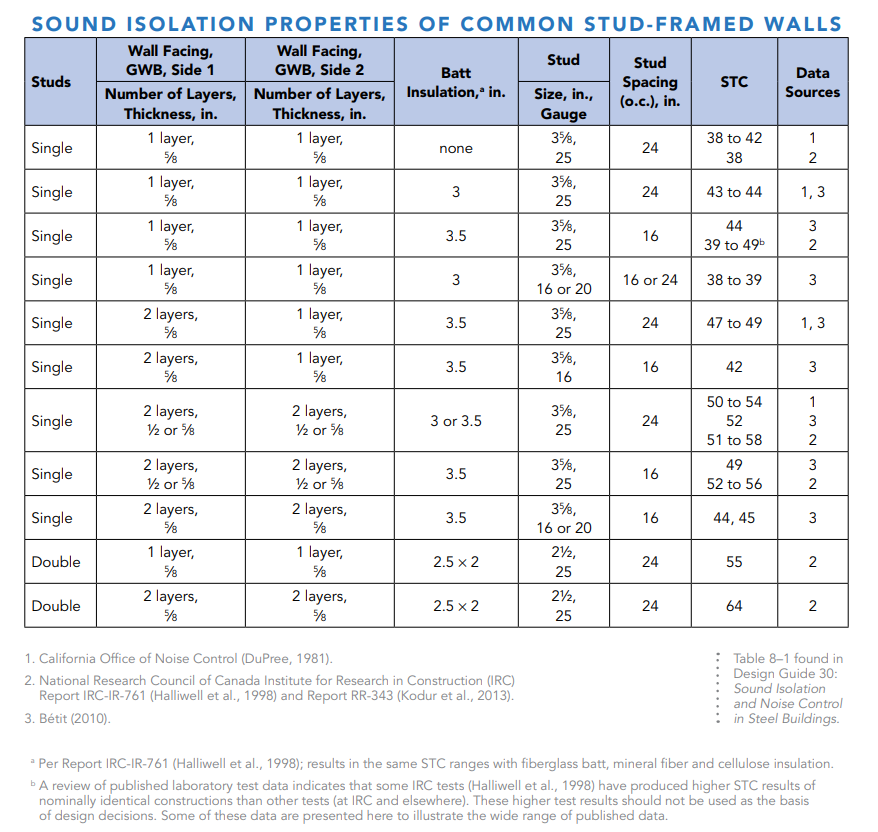
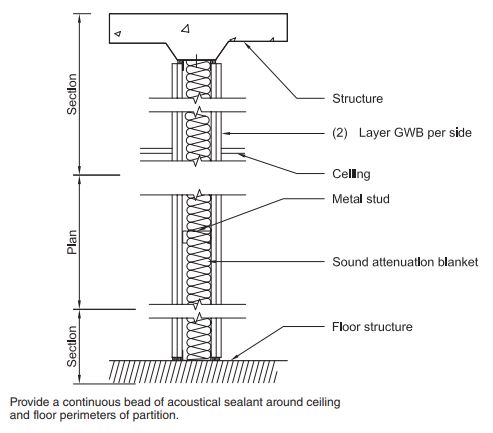
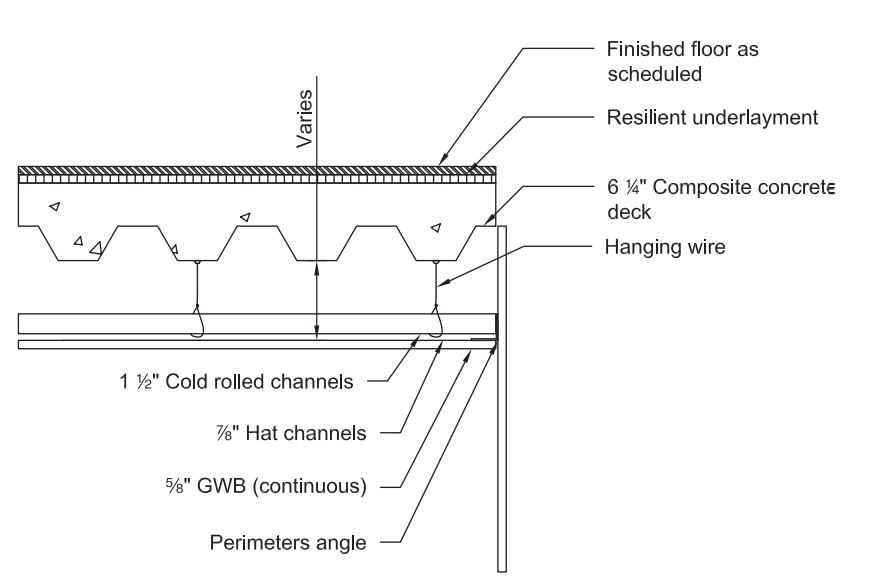
For more information, please refer to AISC's Design Guide 30: Sound Isolation and Noise Control in Steel Buildings.
